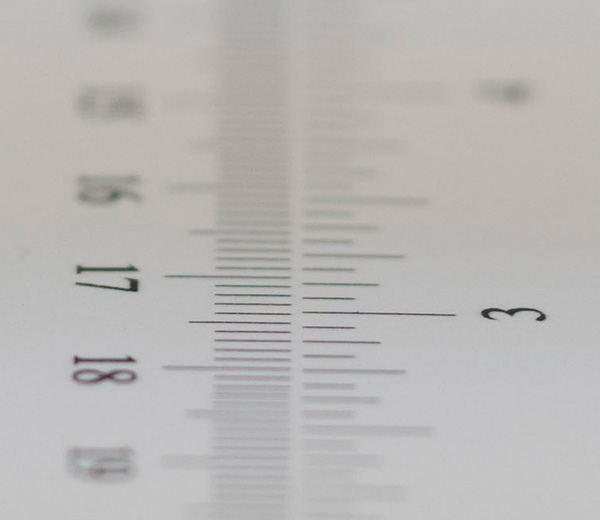|
Sony FE 90mm f/2.8 G OSS macro ( SEL90M28G ) - Full Format Review / Lens Test - Analysis |
|
Lens Reviews -
Sony Alpha (Full Format)
|
|
Page 2 of 3

Distortion
Macro lenses are usual free of image distortions and this also applies to the Sony lens ... in JPEG mode with activated distortion correction that is. The distortion level is slightly higher at 0.9% (barrel-type) when looking at RAW images. This is, of course, still not an issue for the vast majority of applications.
Move the mouse cursor across the image to view the distortion chart in JPEG mode.
Vignetting
At fully open aperture and RAW mode, the light falloff reaches a medium level of 1.4EV (f-stops) - this is noticeable in certain scenes albeit far from being dramatic. Stopping down to/4 reduces the issue and it's basically gone from f/4. When activating auto-correction the camera (or RAW-converter) compensates most of the vignetting at f/2.8 already (at cost of slightly increased corner noise).

MTF (resolution)
The Sony lens is capable of delivering highly impressive sharpness results straight from the max. aperture. The center performance is already excellent at f/2.8 and the quality of the outer image region is easily very good. The peak performance is reached between f/4-5.6 although the increase in quality from f/2.8 is rather marginal. Diffraction effects have a higher impact from about f/11. The quality is still good at f/16 whereas f/22 should be avoided for obvious reasons.
The centering quality of the tested sample was very good. Field curvature is not an issue.
Please note that the MTF results are not directly comparable across the different systems!
Below is a simplified summary of the formal findings. The chart shows line widths per picture height (LW/PH) which can be taken as a measure for sharpness.
If you want to know more about the MTF50 figures you may check out the corresponding Imatest Explanations
Chromatic Aberrations (CAs)
The Sony lens produces a very low amount of lateral CA (color shadows at harsh contrast transitions) starting with an average CA pixel width of 0.9px at f/2.8 and a fraction of that at medium aperture settings. Given the fact that the tests were performed on a 42mp sensor, this is very impressive indeed.

Bokeh
Sony emphasizes that their G (and more so their GM) lenses offer an outstanding bokeh ... but then who's still believing marketeers these days really ...? Well, while there is a grain of truth in this statement, things aren't absolutely perfect.
Out-of-focus highlights have a circular shape between f/2.8 and f/5.6. However, the inner zone of the highlight discs is nervous at least in bright discs. There's a bit of an outlining effect which is getting obvious from f/5.6 onward.
 The highlight discs deteriorate to towards the corners (see the sample crop taken at f/2.8 below) but this is a rather normal behavior in the full format scope. Interestingly the shape is a little different than usual here.
Stopping down helps to tame this aspect to some degree.
The highlight discs deteriorate to towards the corners (see the sample crop taken at f/2.8 below) but this is a rather normal behavior in the full format scope. Interestingly the shape is a little different than usual here.
Stopping down helps to tame this aspect to some degree.
 On the positive side, the rendition of the focus transition zone is very smooth and buttery in both the image background, slightly less so in the image foreground.
On the positive side, the rendition of the focus transition zone is very smooth and buttery in both the image background, slightly less so in the image foreground.

Bokeh Fringing / Longitudinal Chromatic Aberrations (LoCA)
So-called bokeh fringing is an effect that occurs around the focus point (on the Z-axis). It's visible as halos of different colors in out-of-focus areas - magenta (red + blue) in front of the focus point and green beyond.
The Sony FE 90mm f/2.8 G OSS macro is moderately fast so it's not overly affected by the issue. You can spot traces of this at f/2.8 but this is rather negligible.
If you traverse through the aperture range below, you will also recognize that the focus remains static (thus no residual spherical aberrations).
Note: Sorry about the banding in these images. The samples were taken with electronic shutter and the banding is an effect from the artificial light in this case.
|
Move the mouse cursor over the f-stop marks below to observe the respective LoCAs
|
| f/2.8 |
f/4 |
f/5.6 |
|

|
|